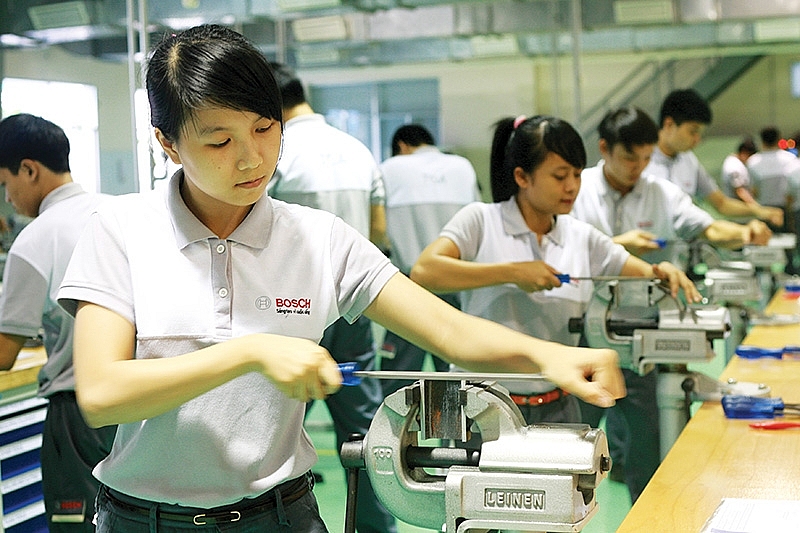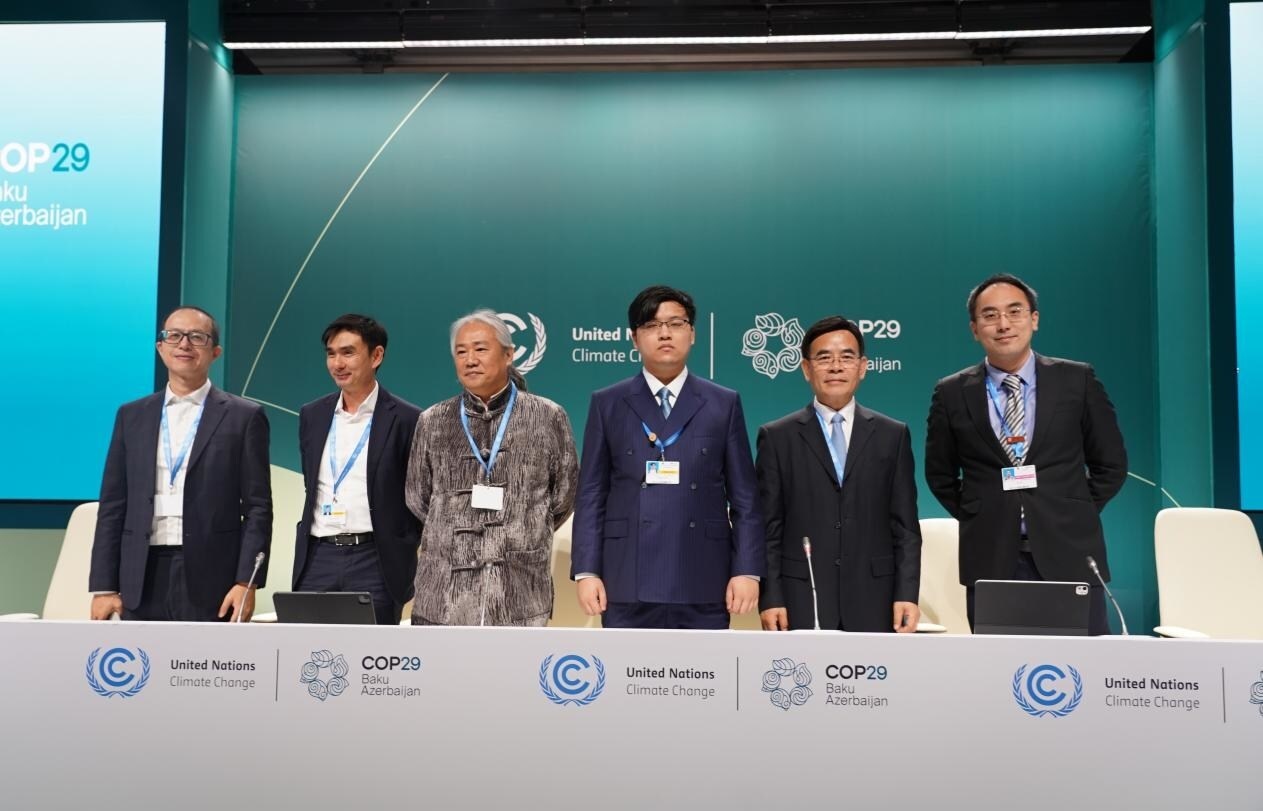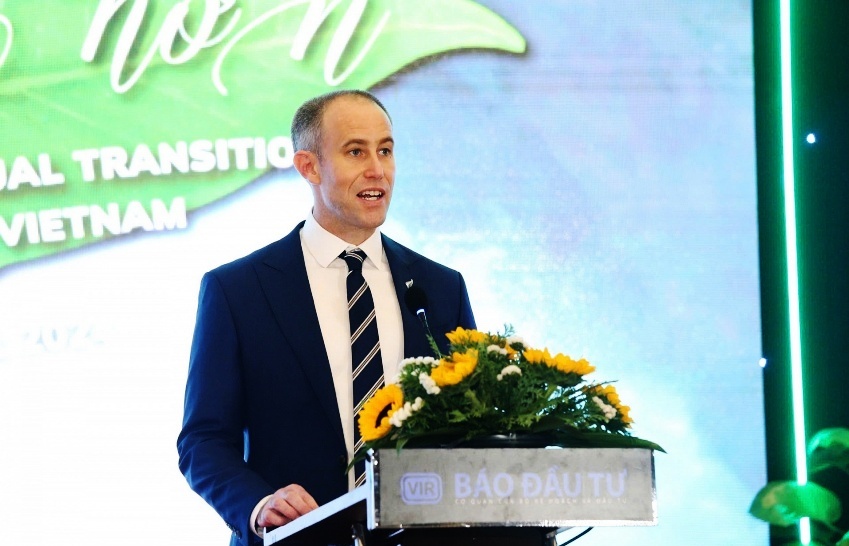Nudging investors towards new pastures
 |
| Björn Koslowski, deputy chief representative of the Delegation of German Industry and Commerce in Vietnam |
China+1 is still a rather new concept. On the one hand, it has arisen from China’s recent economic success and on the other hand it has to do with an increasing attractiveness of other Asian countries that also evolved in the meantime.
German companies went all-in with their Chinese operations during the past 30 years. They invested heavily into manufacturing activities that not only served their existing worldwide markets but also a growing Chinese clientele. They had been lured in by a promising new market and low labour costs.
Expenditures for employees also have been a major driver for sourcing: the country has become the most important origin for a slew of items that are consumed not only in Germany but worldwide. In fact, many German companies concentrate nearly 100 per cent of their Asian investment holdings and sourcing operations in the “Middle Kingdom”. This is naturally exposing them to risk emanating from adverse internal and external developments in China.
There are currently three major trends that drive German companies to reassess their activities in China including rising labour costs, which have tripled over the past decade, a changing investment environment and perceived “un-welcomeness” of foreign investors and sudden shocks such as the 2018 implementation of environmental rules, last years’ US-China trade dispute, and now the coronavirus pandemic.
To mitigate these challenges and the risk arising from new developments, German companies are looking for alternatives for manufacturing investments and sourcing operations. They often find them in Southeast Asia, with Vietnam being a prime destination.
It is important to note that these alternatives for investment and sourcing are an addition to existing Chinese operations. They are not shifting from China to Vietnam entirely. If a process in China should be replaced by activities further down south it typically uses the Vietnamese comparative advantages, for example lower labour costs. Back in China, these companies then employ the benefits the country has to offer, such as a highly-qualified workforce or proximity to target markets.
Activities in China will therefore be complemented by operations in a new market. Hence China+1. Naturally, some companies also extend their manufacturing or supplying networks to even more new destinations. In these cases, the term China+X may also be applied.
 |
| Bosch is a German-based company that has expanded its activities to nations just like Vietnam. Photo: Le Toan |
Sourcing in Vietnam
For most German companies coming to Vietnam, China+1 plays out in the realm of sourcing. From our experience, there are three industries of utmost interest in this context – metal processing, furniture manufacturing, and electronics.
Generally, we are seeing a lot of potential for sourcing operations in Vietnam. However, there are some industry specific challenges involving pricing as well as supplier and product availability.
We are typically approached with sourcing requests in the China+1 context for four main reasons.
Rising costs: Most of our customers do not know the exact composition of their Chinese suppliers’ calculation. Nevertheless, they suspect that increasing payrolls are to blame for escalating product prices. These companies then try to reach a more competitive solution with Vietnamese suppliers. They assume that their lower personnel costs should result in lower price tags. It should be noted though that in our experience this goal can sometimes not be reached.
Sudden shocks: For us in Vietnam, inquiries for metal processing currently make up about 80 per cent of all requests for supplier matchings. They started to increase in 2018 after the Chinese government began implementing harsh environmental regulations that essentially brought a huge chunk of their heavy industries to a screeching halt.
A lot of factories not only in steel-making but also downstream metal processing had to close down. Because the supplier base shrank prices and lead times began to rise – this caused German customers that until then relied almost exclusively on the Chinese market to re-assess their sourcing strategies.
This situation is still ongoing and many customers are now looking into Vietnam for alternatives. As another shock, the US-China trade dispute did not immediately disrupt goods exchange between Germany and Vietnam in such a dramatic fashion but led to a further rethinking of supply routes. The current pandemic will most likely lead to even more companies diversifying their country risks as supply shortages are emerging.
Dissatisfaction with Chinese suppliers: In connection with aforementioned price hikes and rising lead times, many of our customers mention a certain dissatisfaction with their current Chinese suppliers. They do not feel as welcome as a few years back. Some suspect that this is due to their suppliers growing a lot in terms of company size and output so that they do not depend as much on smaller orders from German enterprises as they did in the past.
Free trade agreements (FTAs): Vietnam has spun a vast FTA network over the past 15 years. It covers all of its major trading partners except for the United States. For German companies with manufacturing operations in China it can therefore be advantageous to source certain components in Vietnam and import them tax-free. Crucially, Vietnam will likely implement an FTA with the European Union in 2020. This will be beneficial for the costs of products sourced in Vietnam and should therefore accelerate the ongoing diversification of supply routes.
As noted, Vietnam cannot supplant China as a supplying base. Its industry and average company sizes are much smaller. Vietnam is also missing the vertical industrial integration its northern neighbour can offer. Therefore, most new sourcing operations here will be added to the existing Chinese activities to mitigate individual country risks.
Manufacturing investments
Since 2016, we have received over 120 inquiries from German companies evaluating the setup of manufacturing activities in Vietnam. Over 20 of these enterprises actually invested here during this period. Most of the requests coming in at our offices have some connection to China. They mainly emanate from production plants and/or regional headquarters located there. These companies are typically mulling China+1 investments in Vietnam because of three crucial factors.
The first is rising labour costs. Similar to sourcing, virtually all of our customers cite escalating human resource expenditures in China as a main reason to evaluate activities abroad. Vietnam naturally seems attractive in this respect because its labour costs are only about one-third of its northern neighbour. However, many investors also value non-monetary characteristics of their Vietnamese employees. They often praise their industriousness and their eagerness to learn.
The second factor involves environmental regulation. In past years, we had some customers coming in from China and wanting to set up factories for activities such as casting, tanning, surface coating, and bleaching in Vietnam. German investors typically apply the latest technologies to ensure a clean output of their factories. Still, they reported that they can no longer set up these processes in China. They were therefore evaluating investments in Vietnam for this reason. While it still is possible to invest into heavy and chemical industries it is far from easy to find locations that are ready to accommodate such enterprises. There have been some significant environmental disasters in recent years that have left local governments extremely cautious. It can therefore be challenging to find a suitable location. All of the aforementioned enterprises found fitting industrial zones eventually; some with our help.
The third factor is diversification. Many German enterprises have their Asia-Pacific manufacturing holdings solely located in China. Some of these are recently noticing an evolving risk from this concentration on one country. This is largely due to recent shocks such as the US-China trade dispute. If these companies add manufacturing capacities in the region, they will often implement them outside of China to diversify their holdings and mitigate country risks.
Because the biggest sales market in Asia-Pacific is China and because they maintain long-standing, successful investments there, most German companies will not leave the country. There is no exodus out of China. Most manufacturing investor will however add capacities abroad to supplement their Chinese activities or transfer labour-intensive processes to Vietnam to make full use of the country’s comparative advantage.
China+1 strategies are here to stay. The Chinese economy is rapidly evolving and so are supply routes within Asia-Pacific. This opens up tremendous opportunities for developing countries and for enterprises looking to source or to invest there.
What the stars mean:
★ Poor ★ ★ Promising ★★★ Good ★★★★ Very good ★★★★★ Exceptional
Related Contents
Latest News
More News
- VIR sustainable development conference opens in Hanoi (November 12, 2024 | 09:42)
- Taking the lead in dual transition for a greener Vietnam (November 11, 2024 | 17:00)
- Vietnamese consumers careful amid economic volatility (November 11, 2024 | 13:55)
- Quality must come first in chip mission (November 11, 2024 | 10:33)
- Vietnam's digital economy estimated to reach $36 billion in 2024 (November 07, 2024 | 13:52)
- Authorities looks to tackle influx of cheap foreign goods (November 07, 2024 | 10:44)
- Trump claims 'magnificent' victory over Harris (November 06, 2024 | 16:55)
- Trump on verge of victory over Harris (November 06, 2024 | 14:26)
- Hanoi unveils innovative tourism event to celebrate cultural heritage (November 06, 2024 | 13:36)
- FDI hits over $27 billion in first 10 months (November 06, 2024 | 13:24)




 Tag:
Tag:

















 Mobile Version
Mobile Version